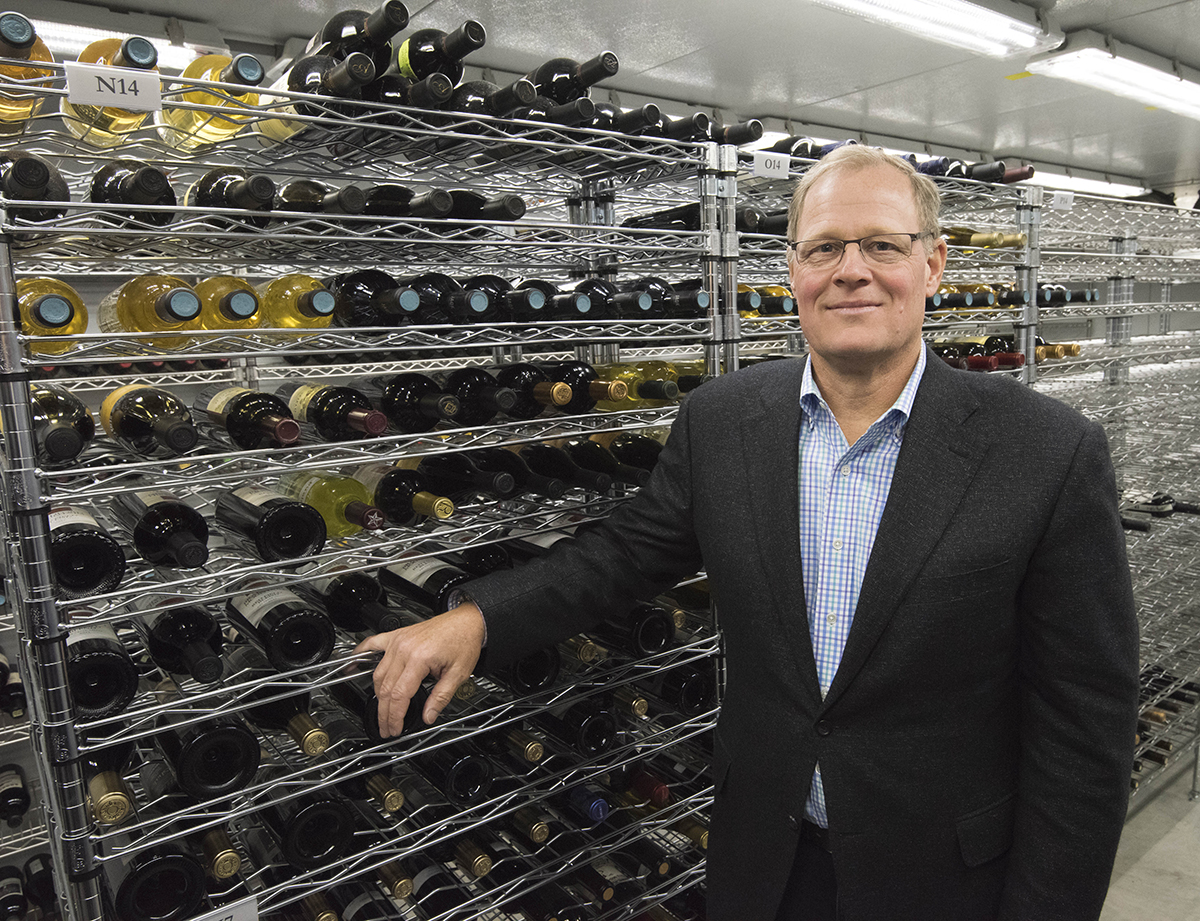New library shelves 3,400 bottles of wine
By Matt Hayes

The newest library on campus contains no books and offers no borrowing privileges.
Located in the basement of Stocking Hall, it lacks the soaring windows and grand views of other locations. Students can’t access the library, and since it’s kept at a constant 54 degrees, it would not offer much of a study refuge anyway.
These shelves only offer learning of a certain vintage: space to hold more than 3,400 bottles of wine.
When fully stocked, the John Wilkinson Family Wine Library, a gift from John Wilkinson ’79, will give Cornell students in viticulture and enology courses access to wines sourced from regions across the world. Shelves more than 7 feet high are already filled with selections from eight countries and winemaking hotbeds in the U.S. like northern California and the Finger Lakes. The robust selection of wines housed in the library will be used to demonstrate the effects of growing practices and idiosyncratic winemaking decisions on wine properties as Cornell trains the next generation of wine industry leaders.
Kept at a constant level of humidity to preserve corks and steady temperature to protect the wine’s chemical integrity, each bottle in the collection is inventoried and searchable by faculty members in the Viticulture and Enology Program. The primary beneficiaries will be undergraduate students in the program’s large survey courses – particularly Wines and Vines, a course enrolling more than 400 students each year and in which tastings are essential to demonstrate lessons in the science and technology of winemaking and grapegrowing.
This is far more than an ordinary wine cellar. Certain wines are reserved for “majors-only” classes that need access to detailed information on how the wine was made, from the choice of yeast strain to the oak barrel manufacturer. Some of these wines are not commercially available, as they would have been used as blend components rather than stand-alone wines.
“Our upper-level students love getting an in-depth understanding of the path taken by a winemaker along the way to making a wine,” said Gavin Sacks, associate professor in the Department of Food Science. Having a dedicated library on campus is just one more unique resource at Cornell’s state-of-the-art teaching winery and teaching vineyards, he added.
Kathryn J. Boor, the Ronald P. Lynch Dean of the College of Agriculture and Life Sciences, agreed: “This teaching winery will enable our students to access a full collection of resources that helps us train the very best winemakers in the world.”
While the library will be used mainly for teaching, it also offers space for research wines that require storage under controlled conditions. For example, Sacks said the library could be useful for long-term studies on the effects of pH and sugar concentrations on wines.
Bin to Bottle, a California wine producer co-founded by Wilkinson, seeded the collection with an initial donation of nearly 700 bottles. Additional bottles from New York state wineries and from around the world are being added to better illustrate the scientific principles of different viticultural and winemaking techniques and to offer students unique comparisons among wine regions. For example, chardonnays from different years (“verticals”) from top Napa and Sonoma producers can be contrasted with producers from New York state, to complement coursework on the effects of chemical composition on wine aging.
Along with exquisite examples of some of the finest wines in the world are also a few duds. Faulty wines that have run into problems somewhere in production are purposefully stocked to provide students access to wines that ordinarily would be dumped before they ever made it to a store. Wines with a vinegary or musty odor that should smell floral and hazy wines that should be clear will be stocked for students to study and investigate how wines go wrong.
“Our students can better learn what these faults are through firsthand experience in real wines, rather than just hearing about them or having us attempt to make crude simulations,” says Sacks.
The library will also include several wines produced by Cornell alumni winemakers to be included in courses.
“There’s something satisfying about being asked in class, ‘So, what do your majors do once they graduate?’ and being able to point and say, ‘Have you tried the red’?”
Matt Hayes is managing editor and social media manager for the College of Agriculture and Life Sciences.
Media Contact
Get Cornell news delivered right to your inbox.
Subscribe